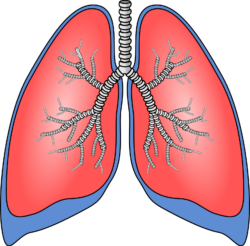Oxygen Deprivation: The Devastating Effects on the Brain
This article provides an in-depth analysis of anoxia, a medical condition caused by a lack of oxygen supply to the brain, resulting in potential life-altering consequences. It explores the causes, symptoms, and types of anoxic brain injuries, their legal and financial implications, and available resources for further understanding. The discussion extends a crucial understanding of this condition, its impact, and possible coping mechanisms for victims, their families, and healthcare providers.

Key Takeaways
- Anoxia, or oxygen deprivation, can result from medical problems like heart attacks or accidents involving severe blood loss.
- Anoxia can lead to permanent brain damage if the brain doesn't receive oxygen for even a few minutes.
- Possible causes of anoxia include high altitude, near-drowning or choking, significant blood loss, carbon monoxide poisoning, low blood flow due to strokes or heart problems, and respiratory conditions like asthma or pneumonia.
- Anoxic brain injury can result in symptoms such as weakness, dizziness, disorientation, memory loss, headaches, difficulty walking or moving limbs, slurred speech, altered judgment, and seizures or loss of consciousness in severe cases.
Understanding Anoxic Brain Injury and Its Causes
Anoxic brain injury, a severe and often irreversible consequence of oxygen deprivation, can be triggered by numerous causes, including but not limited to, four primary types: anemic anoxia, stagnant anoxia, toxic anoxia, and anoxic anoxia. These injuries can lead to devastating long term effects on cognition, impacting memory, attention, and executive functions. Preventing anoxic brain injury involves addressing its root causes such as managing chronic conditions, avoiding toxic exposure, and ensuring prompt medical intervention during critical events. Understanding these causes and their potential impacts on cognition is vital for designing effective preventive and management strategies. Despite this, the multifaceted nature of anoxic brain injury necessitates further research to fully comprehend its complexities and devise more effective methods for prevention, treatment, and long-term care.
Recognizing the Symptoms and Types of Anoxic Brain Injury
In the realm of brain injuries, understanding the various symptoms and types of anoxic brain injury is crucial for early detection and prompt treatment. Symptoms range from weakness, dizziness, disorientation, to severe cases of seizures or loss of consciousness. The types of anoxic injury include anemic, stagnant, and toxic anoxia, each resulting from different causes like inadequate hemoglobin, compromised blood flow, or exposure to toxins. Anoxic brain injury prevention involves understanding these causes and managing risk factors. Advances in anoxic brain injury treatment, like hyperbaric oxygen therapy and neurorehabilitation, are promising, but early detection remains paramount. This knowledge empowers individuals, healthcare providers, and caregivers to take proactive steps in preventing and managing anoxic brain injuries.
The Legal Aspect: Personal Injury Claims and Liability in Anoxic Brain Injury Cases
Every year, countless victims of anoxic brain injuries seek compensation through personal injury claims, navigating the complexities of liability determination in these often medically intricate cases. The crux of these cases often rests upon negligence claims, where the plaintiff must demonstrate that another party's carelessness directly resulted in the anoxic injury. The process of liability evaluation is multifaceted, involving scrutiny of medical records, accident reports, and witness testimonies. Determining culpability can involve multiple parties, from healthcare professionals who may have failed to diagnose or treat conditions leading to anoxia, to individuals or entities responsible for accidents or toxic exposures. The pursuit of justice in these cases is not only about compensation, but also about highlighting the preventable nature of many anoxic injuries.
The Financial Aspect: Determining Long-Term Costs in Anoxic Brain Injury Cases
Assessing the comprehensive financial impact in anoxic brain injury cases necessitates an in-depth consideration of long-term costs, which may encompass future medical needs, rehabilitation, therapy expenses, and lost wages. Collaboration with experts in medical and financial fields is crucial in accurately determining these costs, as they can provide a detailed analysis of the potential financial burdens. This includes ongoing medical care, equipment, and modification needs, and potential income losses. The importance of legal representation in these cases is paramount. A competent legal team can ensure that these complex calculations are considered in any settlement discussions or court proceedings. Ultimately, an accurate assessment of these long-term costs is vital to ensure adequate compensation for the victim's current and future needs.
The Legal Route: Seeking Financial Compensation for Anoxic Brain Injury
Before diving into the specifics of seeking financial compensation for anoxic brain injury, it is important to understand that this process can be intricate and time-consuming, yet it is crucial for securing a just settlement or court judgment. The legal process begins with identifying the negligent party whose actions resulted in anoxia. This could be a healthcare provider, an employer, or a product manufacturer. A personal injury lawsuit is then filed, detailing the negligence and the injury's impact on the victim's life. Lawsuit settlements offer a quicker resolution, but they must adequately cover medical bills, loss of income, and future care. If an agreement cannot be reached, the case may go to trial. A qualified attorney can navigate these complexities, advocating for the victim's best interests.
Rehabilitation and Recovery: Coping With Anoxic Brain Injury
While the journey to recovery following an anoxic brain injury can be complex and challenging, rehabilitation programs play a critical role in improving cognitive and physical functionality. Cognitive therapy, a central component of these programs, aids in reestablishing mental abilities, such as memory, attention, and problem-solving skills, which may have been affected by the injury. Furthermore, assistive technology provides practical solutions to enhance independence and quality of life. For instance, speech-generating devices can compensate for communication deficits, while special software can aid with memory and organization tasks. Regular assessment and modification of these strategies is crucial, as each individual's recovery trajectory is unique. Thus, a multidisciplinary approach combining cognitive therapy and assistive technology is instrumental in supporting an effective rehabilitation journey.
The Clinical Aspect: Medical Interventions for Anoxic Brain Injury
The patient's recovery from anoxic brain injury hinges on effective medical interventions, and understanding the clinical aspect of these interventions is crucial for both healthcare providers and caregivers. Medical treatments range from oxygen therapy to surgery, depending on the extent of the injury. Rehabilitation options, such as physical, occupational, and speech therapy, play a significant role in the patient's recovery process. These treatments aim to restore lost functions and help the patient regain independence. Hyperbaric oxygen therapy is another promising treatment, improving oxygen supply to the damaged brain tissues. Additionally, medication management is an integral part of the treatment plan, addressing symptoms like seizures or mood disorders. Ultimately, a multidisciplinary approach combining various medical treatments and rehabilitation options provides the best chances for recovery.
The Social Aspect: Impact of Anoxic Brain Injury on Relationships and Daily Life
Given that anoxic brain injury can significantly alter a person's cognitive and physical abilities, it is imperative to consider how these changes can strain familial and social relationships, disrupt daily routines, and necessitate lifestyle adjustments. The impact on caregivers is often profound, leading to emotional and psychological effects such as stress, anxiety, and depression. These caregivers, often family members, must adapt to a new role, which can disrupt their own lives and careers. Moreover, the emotional toll of watching a loved one struggle with cognitive and physical impairments can lead to feelings of grief and loss. Therefore, a comprehensive support system, including mental health services, is crucial in mitigating these challenges and facilitating a more manageable transition for both the injured individual and their caregivers.
Additional Resources for Anoxic Brain Injury: Information and Support Services
As we explore the topic of additional resources for anoxic brain injury, it is important to note that these resources not only provide essential information but also offer much-needed support services to both the individuals affected and their loved ones. These resources range from online platforms providing medical insights to support groups that offer emotional and psychological support. For instance, support groups are instrumental in facilitating shared experiences, empathy, and coping strategies among affected individuals. On the other hand, rehabilitation options such as physical therapy, occupational therapy, and cognitive behavioral therapy play a vital role in the recovery process. These options aim at improving the victim's cognitive and physical abilities, thereby enhancing their quality of life. Hence, these resources provide a comprehensive approach to managing anoxic brain injury.
Frequently Asked Questions
What Preventative Measures Can Be Taken to Avoid Anoxic Brain Injury?
Preventing anoxic brain injury involves several strategies, collectively referred to as Anoxic Prevention Techniques. These may include medical check-ups to detect underlying health issues, proper safety measures during high-risk activities, and avoiding substances that can lead to oxygen deprivation. Crucially, Emergency Response Training is vital, equipping individuals with the skills to react promptly and effectively during incidents that can cause anoxia, thereby minimizing the potential for severe brain injury.
Are There Any Specific Exercises or Therapies That Can Help in the Recovery From Anoxic Brain Injury?
Recovery from anoxic brain injury often involves a multifaceted approach. Therapies such as physical, occupational, and speech are commonly employed. Additionally, innovative rehabilitation techniques are continuously being explored to enhance recovery. Cognitive exercises, for instance, can help improve memory and attention. Anoxic survival stories often highlight the importance of these therapies in regaining lost functions. However, each case is unique and recovery largely depends on the severity of the injury and individual response to therapy.
How Does Anoxic Brain Injury Impact a Patient’s Mental Health and Emotional Well-Being?
Anoxic brain injury can significantly impact a patient's mental health and emotional well-being. It can lead to cognitive and emotional changes, often resulting in conditions like depression, anxiety, and post-traumatic stress disorder. Therefore, strategies such as anxiety management and trauma coping become crucial in facilitating mental health recovery. These therapeutic interventions can help patients regain control over their emotions, reduce distress, and enhance their overall quality of life.
What Kind of Support Systems Are Available for Families Dealing With a Loved One’s Anoxic Brain Injury?
Support systems for families managing a loved one's anoxic brain injury include various resources. Financial assistance programs are available to help offset medical and care costs. Additionally, counseling and support groups can provide emotional relief and practical advice to prevent caregiver burnout. Medical professionals, social workers, and non-profit organizations can provide valuable guidance. Accessing these support systems can greatly alleviate the burdens faced by families in these challenging circumstances.
Can Anoxic Brain Injury Cause Other Long-Term Health Complications?
Certainly, anoxic brain injury can precipitate long-term health complications. The prognosis varies widely, largely influenced by the severity of the initial anoxic injury. Complications can range from cognitive and physical impairments to disorders affecting mood and behavior. Additionally, pre-existing genetic predispositions may exacerbate the vulnerability to such complications. Medical and rehabilitative interventions are often necessary to manage these long-term effects and improve the patient's quality of life.
Conclusion
In conclusion, anoxia is a grave medical condition that can lead to severe brain damage, impacting victims' lives and their families profoundly. The complexities of dealing with anoxic brain injury are multifaceted, spanning medical, legal, and financial domains. Therefore, comprehensive understanding and effective interventions are vital. Additional resources and support services are indispensable for managing the long-term effects, ensuring better coping strategies, and improving the quality of life for those affected.

This post has been generated by AI and was not reviewed by editors. This is Not legal advice. Please consult with an attorney.




